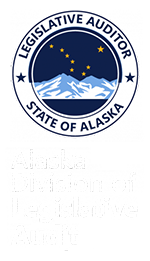| SUMMARY OF: | A Special Report on the Use of Recidivism Rates by State Agencies, Overview of Current Practices, February 23, 2007 |
Purpose of the Report
In accordance with Title 24 of the Alaska Statutes and a special request by the Legislative Budget and Audit Committee, we have conducted a performance audit of the use of criminal recidivism rates as a measure of effectiveness of state rehabilitation programs. As part of the audit, we reviewed the collection of data by state rehabilitation programs as a basis for generating recidivism rates and evaluating outcomes.
Report Conclusions
We concluded there is no universal standard when it comes to calculating recidivism rates. Calculation methodologies need to be customized to provide recidivism data to answer specific questions. While there are no industry standards for calculating recidivism rates, there are critical components in describing the methodology that should be included in any report. The three components are: a clear description of the population to be studied; the time period reviewed; and, a detailed description of what constitutes a “relapse into criminal behavior.” Without these components, a recidivism study does not give a sufficient framework to understand and accurately interpret the study’s results.
We also concluded that the routine calculation of recidivism rates is cost prohibitive, mainly due to the availability of data. Most data are collected manually through the use of intake logs and client files. Manual data collection severely limits the State’s ability to efficiently evaluate program effectiveness, including the calculation of recidivism rates. For those programs that do have an electronic database, its usefulness is limited because the information is incomplete, unreliable, or too new to be of current use.
Appendix B provides a summary of various recidivism studies for state rehabilitation programs that have been issued between July 1996 and February 2007.
Findings and Recommendations
The report includes the following three findings and recommendation:
Recommendation No. 1
The commissioner of the Department of Public Safety (DPS), as chair of the criminal justice information advisory board (CJIAB), should reestablish the board as a first step towards integrating the State’s criminal justice systems.
We recommended the commissioner of DPS reconvene CJIAB. We further recommended CJIAB leverage the structure and accomplishments of the Multi-Agency Justice Integration Consortium by providing the group strategic direction that allows the state to work towards full integration of criminal justice systems.
Recommendation No. 2
The Department of Health and Social Services (DHSS) director of the Division of Behavioral Health should institute quality control procedures over the data collected and stored in the Alaska Automated Information Management System (AKAIMS) behavioral health database.
We recommended that the division director institute procedures to ensure accurate and complete data is entered into AKAIMS by behavioral health grantees. Once reliability of the data is established, we recommended DHSS utilize this valuable information to gain insight into the factors that affect recidivism.
Recommendation No. 3
The commissioner for the Department of Corrections (DOC) should improve the data collection for its institutional programs aimed at reducing recidivism.
We recommended DOC’s commissioner institute and enforce standard data collection procedures for its inmate education/training programs at each correctional facility. This should allow for the collection of program data that could be used to evaluate program effectiveness, including the calculation and analysis of recidivism rates.
Auditor’s Comments
The following auditor’s comments were included:
The Alcohol Safety Action Program’s program manager should explore the possibility of using its new central web-based database to generate annual recidivism data.
Significant changes are needed for the organization and administration of the Batterers Intervention Program to allow for the collection and analysis of program data.

